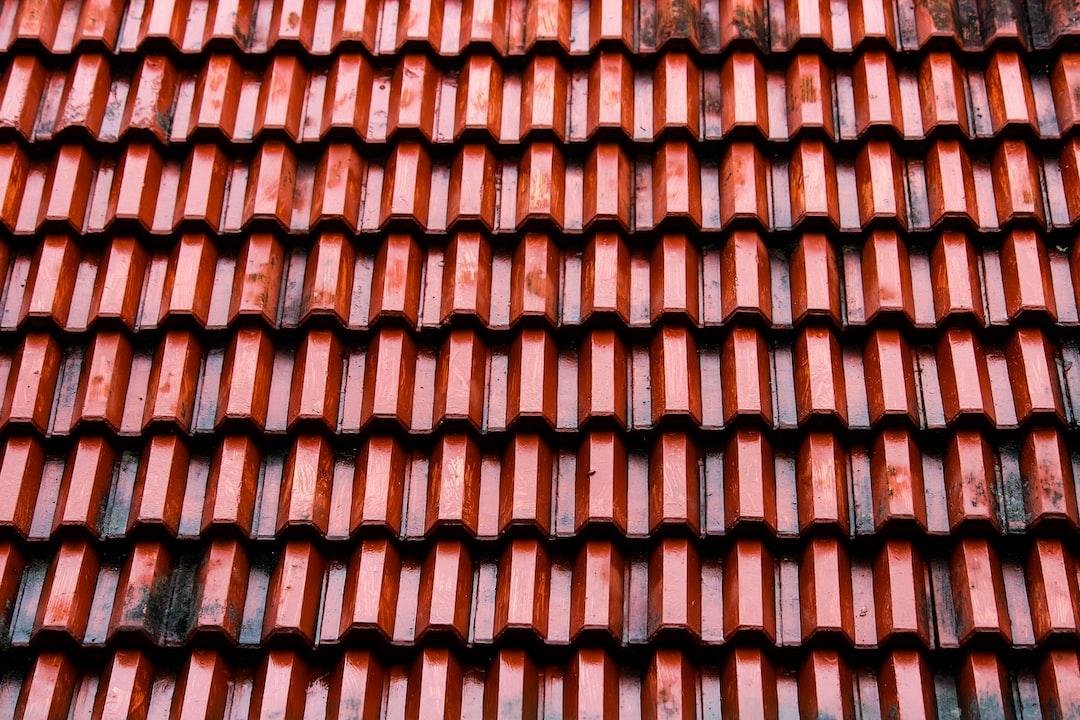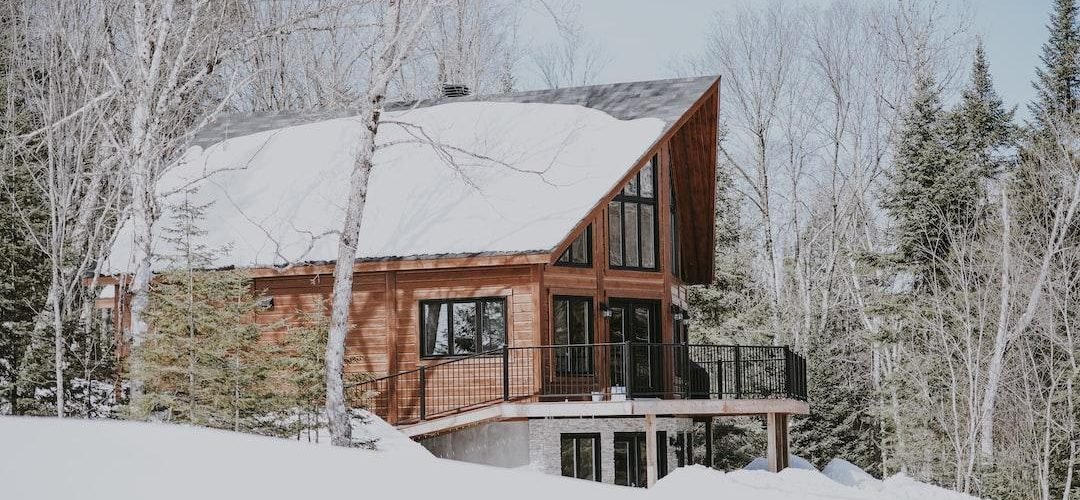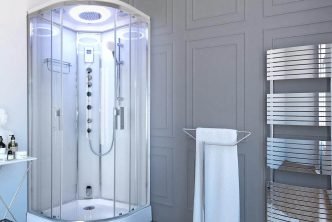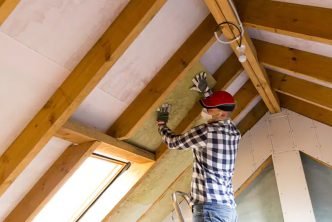Estimating the cost of a metal roof can be a daunting task for homeowners and contractors. Numerous factors come into play, such as materials, labor, and additional expenses such as permits and inspections. In this article, we will discuss essential topics to help you confidently estimate the cost of your next metal roof project. Keep reading to learn more.
Table of Contents
Understanding Different Metal Roofing Materials
When estimating the cost of your metal roof, the first step is to research the various metal roofing materials available on the market. Common materials include steel, aluminum, zinc, and copper, each with its distinct advantages and price points.
Galvanized steel is the most popular option due to its cost-effectiveness, corrosion resistance, and durability. However, it may not be the best choice for coastal areas due to its susceptibility to saltwater corrosion. Aluminum is lightweight, corrosion-resistant, and suitable for coastal areas. Although it’s more expensive than steel, it offers a longer lifespan. Zinc offers similar advantages to aluminum but comes with an even higher price tag, while the most expensive option is copper, which is a premium material known for exceptional beauty and longevity.
Researching these materials will enable you to choose the best option for your home, taking into account factors such as the local climate, your budget, and your aesthetic preferences. A metal roofing cost calculator is a helpful tool that can assist you in these calculations, making it easier to arrive at a total cost estimate.
Beyond the material costs, the gauge or thickness of the metal can also play a significant role in pricing. Thicker materials can provide better durability but will be more expensive upfront. It’s important to balance cost with long-term benefits to select the best material for your specific needs.
Calculating Square Footage and Material Cost

The next step in estimating the cost of a metal roof is calculating the square footage of your roof and determining the amount of material you will need for the project. You can do this by measuring the dimensions of your roof’s surface area. If your roof has multiple sections or complex geometry, you may need to measure these individually and combine the totals to get the roof’s overall square footage.
Once you have the square footage, you can estimate the material costs by multiplying the cost per square foot of your chosen metal roofing material by the total square footage of the roof. Be sure to account for any waste factor. It’s generally recommended to add a 10 percent allowance for cutting and fitting. Also consider the cost of any necessary accessories, such as flashing, trim pieces, and fasteners.
Labor Costs and Installation
Estimating labor costs and installation for the cost of a metal roof is an essential step in planning any roofing project. The labor component of the overall cost can greatly influence the final price of installing a metal roof.
The labor costs for installing a metal roof can vary depending on several factors. First, the complexity and size of the roof determine the amount of time needed for installation. A larger roof with multiple angles and intricate details will require more labor resulting in higher costs. Additionally, the pitch, or slope, of the roof can also impact labor costs. Steep roofs often require extra safety precautions and specialized equipment, which can increase overall labor expenses.
Another factor to consider when estimating labor costs is the experience and expertise of the roof contractor. An experienced contractor with a proven track record may have higher labor rates compared to a less experienced contractor. However, hiring a skilled professional is crucial to ensure the proper installation of a metal roof, as mistakes can lead to leaks or other issues in the future.
It’s also important to note that different types of metal roofing materials have varying installation requirements, which can affect labor costs. For example, standing seam metal roofs may require more time and skill to install compared to metal shingles or corrugated panels.
To get an accurate estimate of labor costs and installation for a metal roof, it’s recommended to consult multiple roofing contractors and obtain detailed quotes. This will allow you to compare prices, evaluate the expertise of the contractors, and make an informed decision. Investing time and effort in estimating labor costs upfront can help you avoid surprise expenses and ensure a successful and cost-effective metal roof installation.
Obtaining Permits and Scheduling Inspections
When estimating the cost of a metal roof, it’s important to consider not just the materials and installation expenses, but also the associated costs of obtaining permits and scheduling inspections. These additional expenses are often overlooked but can significantly impact the overall budget of your roofing project.
Before any construction work can take place, it’s typically necessary to obtain permits from local authorities. These permits ensure that the installation of your metal roof complies with building codes and regulations. The cost of permits can vary depending on the location and the complexity of the project.
In addition to permits, scheduling inspections is also a crucial part of the metal roof installation process. Inspections are carried out at various stages during the construction to ensure that the roof is being installed correctly and according to the approved plans. These inspections are usually performed by a city inspector or a building official and help to ensure that the roof meets safety and quality standards.
While obtaining permits and scheduling inspections may add to the expenses of installing a metal roof, they are necessary to ensure that your project is legally compliant and meets the required standards. These costs can vary depending on the jurisdiction and the complexity of the project, so it’s advisable to consult professionals or local authorities to get accurate estimates. Taking these factors into account will help you have a more comprehensive understanding of the total cost of your metal roofing project.
Understanding the Long-Term Value of a Metal Roof
Understanding the long-term value of a metal roof is essential for homeowners who are considering investing in a durable and reliable roofing option. Metal roofs are gaining popularity due to their longevity, low maintenance requirements, and numerous benefits they offer.
One key aspect of a metal roof’s value is its incredible lifespan. Unlike traditional asphalt shingle roofs that may need to be replaced every 15-20 years, metal roofs can last 50 years or more with proper installation and maintenance. This extended lifespan not only saves homeowners significant amounts of money in replacement costs but also eliminates the hassle and disruption of frequent roof repairs.
Another factor that contributes to the long-term value of a metal roof is its energy efficiency. Metal roofs have excellent insulation properties, reflecting a significant amount of the sun’s heat during hot summer months, thereby reducing cooling costs. In colder seasons, the metal roof acts as an additional layer of insulation, preventing heat loss and reducing heating expenses.
Furthermore, metal roofs require minimal maintenance, enhancing their long-term value for homeowners. Unlike other roofing materials that may require frequent repairs, cleaning, or recoating, metal roofs are extremely durable and resistant to damage from elements such as wind, rain, and snow. They are also not prone to issues like moss or algae growth. This means homeowners can enjoy peace of mind knowing that their roofs will remain in excellent condition with routine inspections and basic maintenance.
Understanding the long-term value of a metal roof is crucial in evaluating whether it’s the right choice for your home. Its durability, energy efficiency, and low maintenance make it a wise investment that can provide decades of protection and savings. With a metal roof, homeowners can enjoy peace of mind, knowing they have a reliable and long-lasting solution for their roofing needs.





